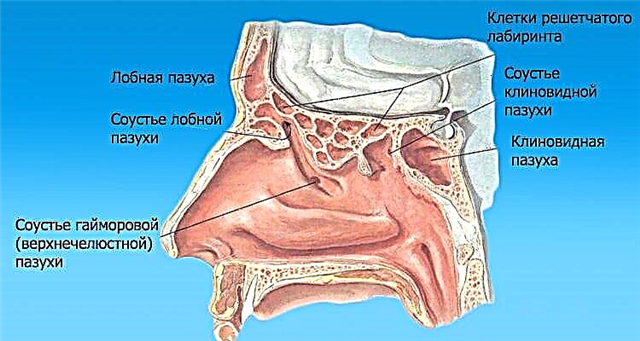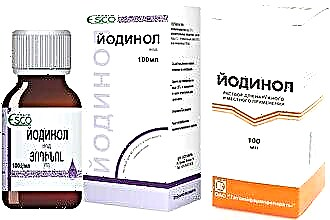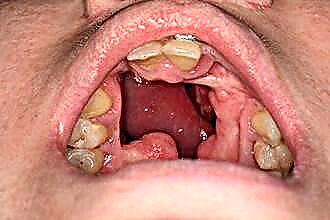Chronic nasal congestion is a much more dangerous condition than it might seem at first glance. A person suffering from persistent nasal breathing problems suffers from a lack of oxygen and also exposes the upper respiratory tract to infection. The fact is that nasal breathing is not only more effective than breathing through the mouth, but also safer, since the air passing through the nasopharynx is cleansed, warmed and moistened. Thus, a long-term violation of free nasal breathing can significantly affect the state of health in general.
Why does chronic nasal congestion develop, and how to get rid of it?
Treatment depends on the cause
 Before starting the treatment of chronic nasal congestion, it is necessary to understand what exactly makes nasal breathing difficult - the success of therapy depends on it. Indeed, there is no universal remedy capable of completely and permanently restoring nasal breathing, since the causes of congestion differ significantly from each other.
Before starting the treatment of chronic nasal congestion, it is necessary to understand what exactly makes nasal breathing difficult - the success of therapy depends on it. Indeed, there is no universal remedy capable of completely and permanently restoring nasal breathing, since the causes of congestion differ significantly from each other.
Among the diseases in which the patient constantly has a stuffy nose, the following can be distinguished:
- Vasomotor rhinitis - allergic or neurovegetative. This is a disease of the nasopharynx associated with hypersensitivity of the mucous membrane to irritants of an allergenic (with an allergic form of the disease) or non-allergenic nature (with a neurovegetative form). The main symptom is that the patient often has a stuffy nose, while a severe profuse rhinitis can be observed, but in some cases, nasal discharge is absent. The nose can become blocked when the air temperature changes, low humidity, dustiness, as well as when inhaling allergens, smoke, and strong odors.
Vasomotor rhinitis can develop as a secondary disorder in people suffering from adenoiditis, polyposis, curvature of the nasal septum.
What if you suspect you have this disease? Vasomotor rhinitis is treated with saline drops or, in more severe cases, with nasal hormones. A small operation on the mucous membrane (the so-called moxibustion) helps to get rid of the symptoms of vasomotor rhinitis for a long time.
- The growth of adenoids and polyps disrupts nasal breathing purely mechanically, due to partial or complete overlap of the lumen of the nasal passages. Symptoms are snoring, restless sleep, nasal voice, a tendency to colds.
If adenoids or polyps interfere with nasal breathing, they should be surgically removed. Other treatments will either provide short-term relief or not work at all.
- Curvature of the nasal septum - also partially or completely blocks the air flow path. More often, with a curvature of the septum, one nostril does not breathe, but if the curvature is S-shaped, both nostrils do not breathe well. Symptoms are nasal congestion, mouth breathing during sleep, frequent sinusitis, accumulation of thick mucus and crusts in the nose.
A curved septum is a mechanical obstacle that impedes the passage of air through the nasal passages, and it is obvious that no drops will help in this case - surgical intervention (septoplasty) is required.
- Rhinitis medication is a chronic inflammation of the nasal mucosa resulting from the excessive use of vasoconstrictor drugs (nasal drops and sprays).
Exactly so - the abuse of drugs for nasal congestion can lead to chronic nasal congestion.

With frequent use of drops, the walls of the blood vessels relax - this leads to chronic edema. Symptoms of the disease are frequent congestion of both nostrils, perspiration in the nasopharynx, dryness of the mucous membrane, fragility of the vessels of the nasal cavity. How to cure chronic nasal congestion with rhinitis medicamentosa? First, the patient must refuse to use vasoconstrictor drops, and switch to salt preparations - restoring the normal functioning of the mucous membrane. The doctor may prescribe hormone therapy (drops that relieve swelling).
- Dry rhinitis is a chronic sluggish inflammation of the mucous membrane, in which the nasopharynx does not produce an excess amount of mucus, but, on the contrary, dries up. In this case, the patient has a chronically stuffy nose, dry crusts accumulate on the mucous membrane, sometimes thick dark mucus is blown out.
How is dry rhinitis treated? Therapy includes moisturizing nasal drops (based on saline solutions, sea water), as well as ointments and oil drops that prevent moisture from evaporating from the mucous membrane and relieve inflammation. If an infection is present, the doctor selects general antibiotics.
Thus, the primary task in the successful treatment of chronic nasal congestion is diagnosis - determining the cause of the difficulty in nasal breathing.
Treatment
What to do to make nasal breathing easier? The first solution that comes to mind is to drip the nose with vasoconstrictor drugs.
Indeed, vasoconstrictor drops and sprays are created precisely in order to relieve swelling and remove nasal congestion, but it is completely wrong to use them to treat chronic congestion.
First, the maximum period of their use is 7 days - after that addiction develops and side effects appear. Secondly, as already mentioned, often the vasoconstrictor drops themselves are the cause of chronic congestion. How to treat congestion safely and effectively?
Drugs
In the absence of indications for surgery, treatment begins with drug therapy. The most affordable and uncontraindicated treatment is a weak saline solution (saline solution). It is used as:
- drops for the nose;
- solution for washing the nasopharynx;
- inhalations.
The pronounced therapeutic effect of saline is observed if dry air is the cause of constant congestion. Also, irrigation and lavage of the nasopharynx with saline have a beneficial effect on dry, vasomotor and drug rhinitis.
The second remedy in the fight against chronic congestion is hormonal nasal drugs. They do not enter the bloodstream, so they do not have systemic side effects. At the same time, they can reduce local immunity, so they should not be used if there is a suspicion of infection in the nasopharynx.
The effect of hormonal nasal drugs appears 6-12 hours after instillation and lasts up to a day. Some of them can be used for a long time (up to six months), so they are often prescribed for vasomotor rhinitis (both allergic and neurovegetative).
Adjunctive therapy
Treatment of chronic nasal congestion can be supplemented with various alternative methods, but it is better to do this after consulting your doctor. To facilitate nasal breathing will help:
 Instilling self-prepared oil drops into the nose (a mixture of olive or sea buckthorn oil with tea tree, thuja or eucalyptus essential oil). These drops are especially effective for dry rhinitis.
Instilling self-prepared oil drops into the nose (a mixture of olive or sea buckthorn oil with tea tree, thuja or eucalyptus essential oil). These drops are especially effective for dry rhinitis.- Inhalation with warm water with the addition of a few drops of eucalyptus oil. This procedure reduces inflammation of the mucous membrane, and also helps to cleanse the nasal cavity from crusts.
- Inhalation with a decoction of chamomile or eucalyptus leaves. Please note that immediately after inhalation, the nose may become blocked for a while, but this is a short-term effect.It is caused by warming of the mucous membrane, and therefore the expansion of the blood vessels of the nasopharynx.
- Massage of the paranasal region (projections of the sinuses, nose tip, bridge of the nose, temples) with essential oils - helps to restore nasal breathing.
It should be noted that traditional medicine can only alleviate the patient's well-being for some time. You should not expect a long-term effect from them.
Surgery
Many people have an extremely negative attitude towards the surgical treatment of chronic congestion, and it is completely in vain - it is better to solve the problem once and for all than to treat a stuffy nose with drops for life. In some cases, surgery is one of the treatment options; in others, it is the only treatment that promises improvement.
So, almost 100% of the indication for surgery is the curvature of the nasal septum (of course, if this violation interferes with breathing freely). The operation to correct the septum is called septoplasty. It can be performed both under local anesthesia and under general anesthesia, depending on the complexity of the case and the wishes of the patient. During the operation, the surgeon dissects the cartilage and bones of the septum, which are in the wrong position, and gives them the correct position. Often during the operation, the doctor also removes the adenoids and restores the normal size of the turbinates so that the patient can breathe as freely as possible after the operation. The recovery period after surgery is 1 to 2 weeks.
Also, the operation is indicated for the proliferation of adenoids and nasopharyngeal polyposis. Polyps and adenoids are usually removed under local anesthesia, but for children, for example, surgery can be done under general anesthesia. The operation is fast enough, and most importantly - effective.
"Cauterization" of the mucous membrane is another type of surgical intervention used to restore nasal breathing. The indication for it is vasomotor rhinitis, as well as medication rhinitis, which is difficult to treat. In the course of "cauterization" by the laser, small blood vessels are destroyed, due to which the constant edema of the mucous membrane is removed.
It is possible to cure chronic nasal congestion - the main thing is to clearly determine the cause that caused it.


 Instilling self-prepared oil drops into the nose (a mixture of olive or sea buckthorn oil with tea tree, thuja or eucalyptus essential oil). These drops are especially effective for dry rhinitis.
Instilling self-prepared oil drops into the nose (a mixture of olive or sea buckthorn oil with tea tree, thuja or eucalyptus essential oil). These drops are especially effective for dry rhinitis.

